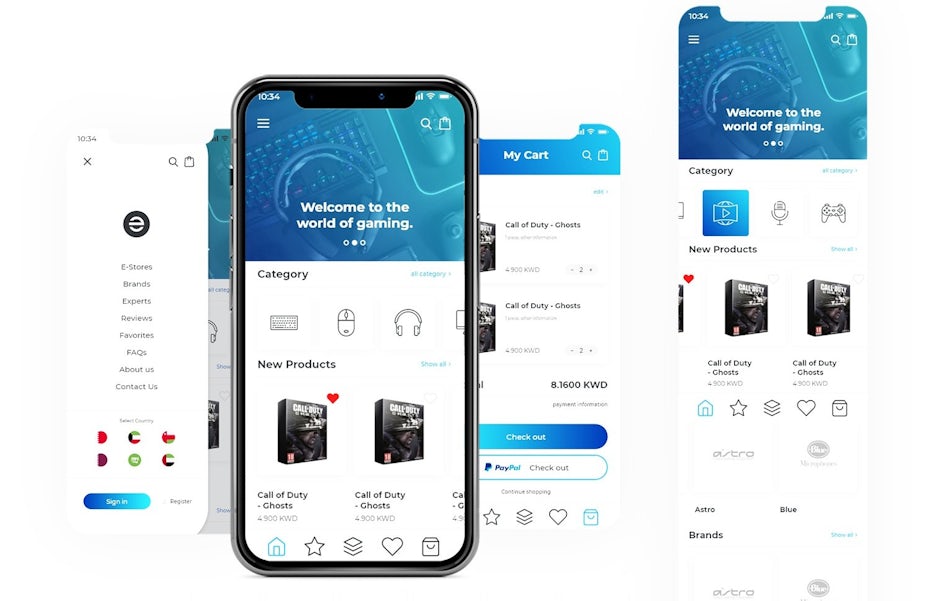Elevate Your Brand with Comprehensive Mobile Optimization Solutions

The Ultimate Overview to Mobile Optimization: Techniques for Enhancing Internet Site Efficiency on Smartphones and Tablets
The techniques for improving site performance on mobile platforms go past simple adaptation; they encompass a comprehensive technique that entails responsive design, speed optimization, web content techniques, and user experience improvements. By diving into the complexities of mobile optimization, services can not only fulfill customer expectations yet likewise stay in advance in an affordable digital landscape.
Value of Mobile Optimization
Mobile optimization plays a critical role in boosting individual experience and driving conversion prices in the ever-evolving digital landscape. With the increasing use mobile phones and tablets for searching the internet, making certain that web sites are enhanced for smart phones has come to be imperative for services - Mobile Optimization. A mobile-optimized internet site not just adapts perfectly to different display dimensions but additionally loads quickly, giving users with a smooth and satisfying browsing experience
In today's busy globe, users expect instantaneous access to information on the go. An internet site that is not enhanced for mobile phones threats losing prospective consumers because of slow filling times or a poor individual interface. By buying mobile optimization, services can cater to the requirements of their mobile target market, leading to higher involvement and enhanced conversions.
In addition, online search engine like Google focus on mobile-friendly internet sites in their rankings, making mobile optimization crucial for improving presence and bring in natural web traffic. Mobile Optimization. On the whole, the importance of mobile optimization can not be overstated, as it directly influences user complete satisfaction, conversion prices, and general company success in the electronic realm
Responsive Design Techniques
Executing responsive design techniques ensures that internet sites dynamically adjust their layout and content based upon the user's gadget screen size, giving a regular customer experience across numerous systems. Among one of the most usual approaches utilized in responsive design is creating fluid grids that allow web content to resize proportionally to the display size. This guarantees that aspects on the web page maintain their relative spacing and setup, enhancing the checking out experience for individuals on different tools.
Furthermore, using versatile images that can scale with the dimension of the viewport helps protect against photos from being chopped or distorted on smaller sized screens. CSS media questions play a crucial duty in receptive design by enabling developers to use particular styles based upon the gadget features such as screen size, height, and positioning. By leveraging media queries, internet sites can adjust their design and layout to suit smart devices, tablets, and desktop computer screens flawlessly.
Integrating receptive design techniques not just enhances individual experience yet additionally contributes to boosted online search engine positions, as online search engine like Google prioritize mobile-friendly web sites in their mobile search results page. By accepting receptive design, internet sites can accommodate the varied demands of users accessing material on a range of devices, eventually driving involvement and conversions.
Speed and Efficiency Optimization

One key method is enhancing images and multimedia material to minimize data sizes without endangering high quality. Compressing pictures, leveraging modern photo styles like WebP, and careless packing offscreen pictures are efficient methods to quicken click to read load times (Mobile Optimization). Moreover, minimizing HTTP demands, leveraging web browser caching, and reducing web server reaction times are essential steps in boosting performance.
Executing a web content shipment network (CDN) can also considerably enhance site rate by distributing web content throughout multiple servers around the world, reducing latency for users accessing the site from various locations. Prioritizing essential above-the-fold web content and delaying non-essential manuscripts can further improve viewed performance. By concentrating on rate and performance optimization, sites can supply a smooth and rewarding customer experience on mobile phones.
Mobile-Friendly Material Methods
Mobile-friendly web content approaches involve tailoring the presentation of information to suit the smaller sized displays and on-the-go nature of smart device and tablet computer customers. In addition, damaging up content into shorter paragraphs and using bullet factors can aid enhance readability and make it simpler for individuals to eat details swiftly.
Incorporating interesting visuals, such as photos and videos optimized for mobile watching, can also boost the general individual experience. These visuals ought to matter, high-grade, and lots swiftly to stop users from wearying. Integrating interactive components like quizzes, surveys, or surveys can boost customer involvement and encourage energetic involvement.
Customer Experience Enhancements
Structure on the foundation of mobile-friendly web content methods, improving individual experience entails optimizing every touchpoint to make sure smooth interaction and satisfaction for mobile individuals. One vital aspect of boosting user experience on mobile gadgets website here is guaranteeing fast packing times. Users expect internet sites to load promptly on their mobile phones and tablet computers, and any delays can bring about stress and boosted bounce prices. Implementing responsive layout is an additional crucial consider improving individual experience. Receptive design guarantees that internet sites adjust to numerous display dimensions and resolutions, offering a constant and straightforward experience throughout various devices.
Maximizing forms for mobile users by decreasing the number of areas and making use of auto-fill features can additionally boost the total customer experience. By focusing on these individual experience improvements, sites can properly involve and preserve mobile visitors.
Verdict
To conclude, mobile optimization is important for link boosting site efficiency on smartphones and tablets. By applying responsive layout methods, enhancing speed and efficiency, developing mobile-friendly web content, and enhancing individual experience, companies can successfully reach and involve with their mobile audience. It is vital for sites to adapt to the raising mobile usage trends in order to stay competitive in the digital landscape.